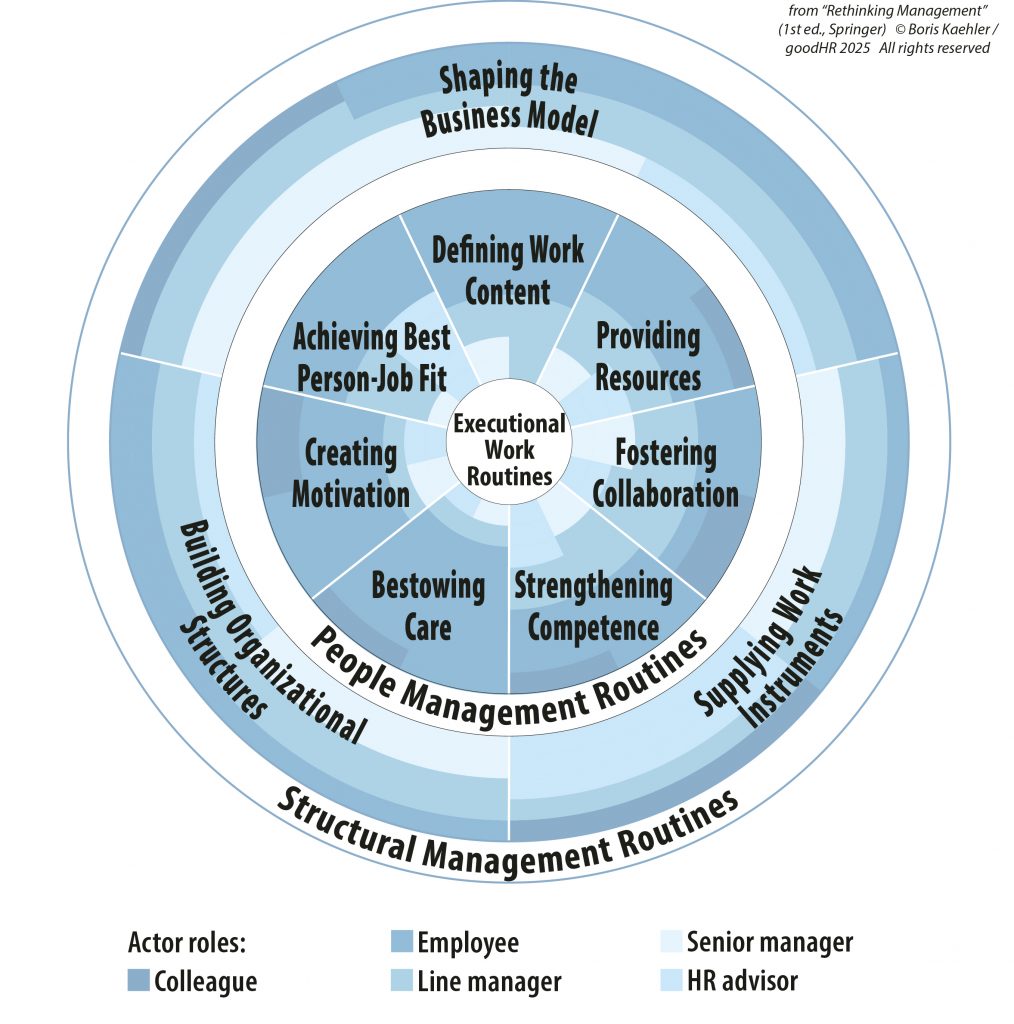Terminology
All too often, management and leadership are discussed without precisely defining what is meant by the terms. Management literature offers countless and very different definitions. In the context of Complementary Management, managing is understood as a deliberate influence on operations in an organization or an organizational unit with the aim of achieving organizational objectives. People management is part of this and refers to a deliberate steering influence on people in an organization or an organizational unit with the aim of generating work performance and achieving organizational objectives. Leadership may be regarded as a synonym of management (although it is often used for only a subset of the latter, i.e. a mixture of agenda-setting and followership-building characteristic of political influence). To avoid misunderstandings, we often use “management and leadership” to indicate synonymity while capturing the full meaning of both terms.




